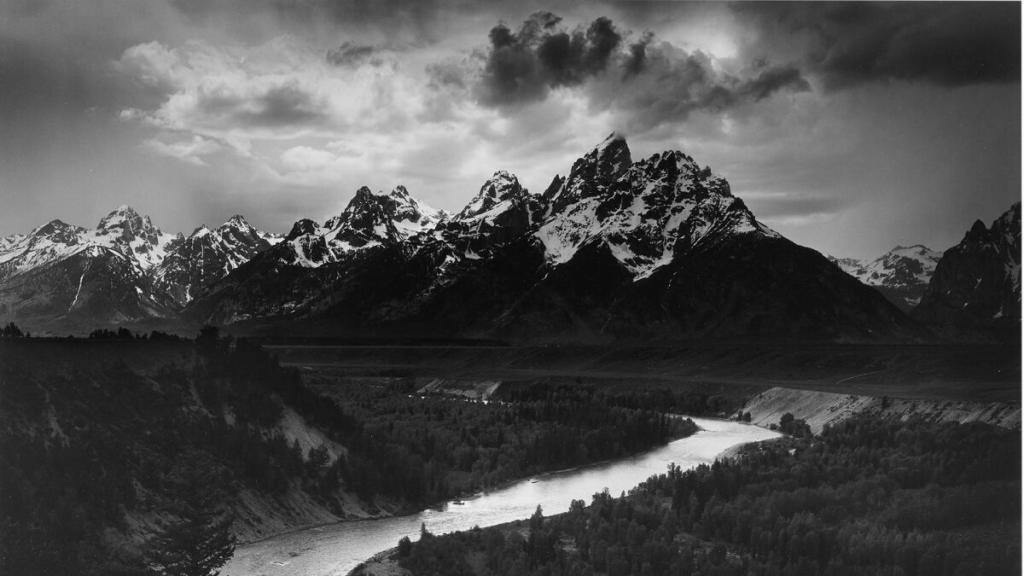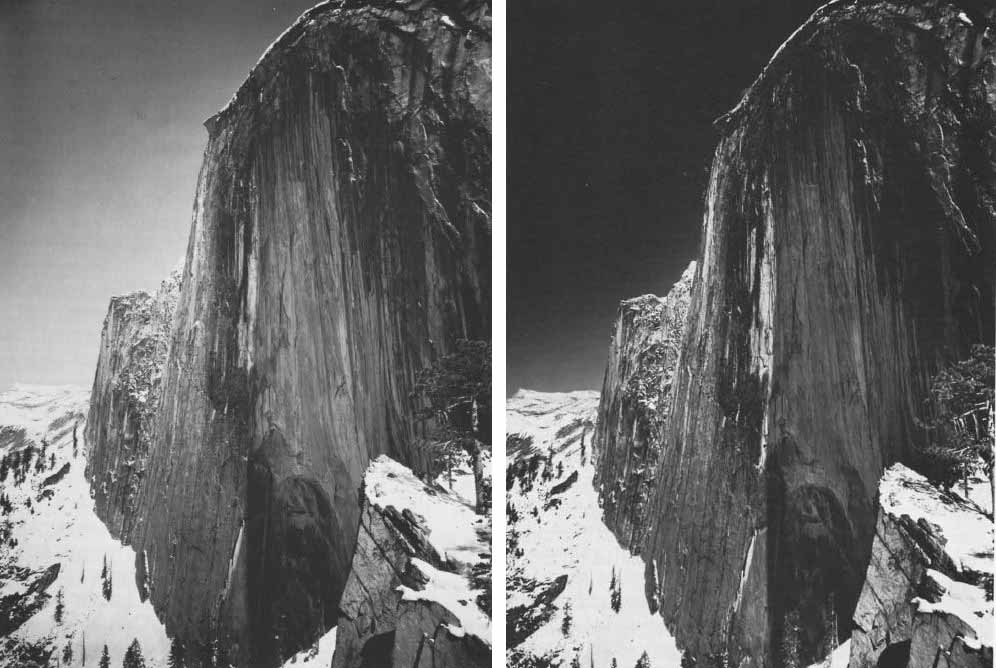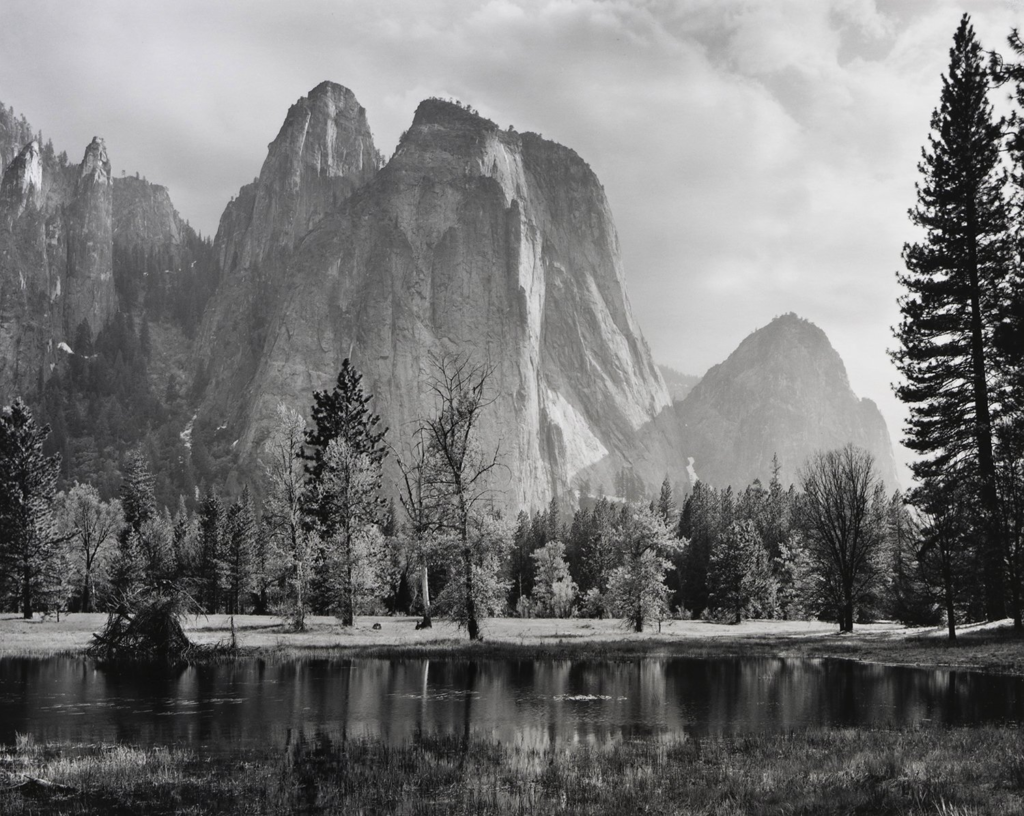Ansel Easton Adams was an American landscape photographer and environmentalist known for his black-and-white images of the American West. He helped found Group f/64, an association of photographers advocating “pure” photography which favoured sharp focus and the use of the full tonal range of a photograph.

His childhood
Adams was a hyperactive and sickly child with few friends. Dismissed from several schools for bad behaviour, he was educated by private tutors and members of his family from the age of 12. Adams taught himself the piano, which would become his early passion.
Yosemite National Park
“I knew my destiny when I first experienced Yosemite”
The Sierra Club
The Sierra Club is an American environmental organization with chapters in all 50 U.S. states, Washington D.C., and Puerto Rico. The club was founded in 1892, in San Francisco, by preservationist John Muir.
1927
On the chilly spring morning of April 10th, 1927, Ansel Adams set out along Yosemite’s LeConte Gully to capture an image of the striking sheer face of Half Dome, one of Yosemite National Park’s most iconic natural features.
Nineteen twenty seven was the pivotal year of Adams’s life. He made his first fully visualized photograph, Monolith, the Face of Half Dome, and took his first High Trip. More important, he came under the influence of Albert M. Bender, a San Francisco insurance magnate and patron of arts and artists.
Kings Canyon
The Sierra Club advocated for making Kings Canyon a national park so it could be better protected, and Adams was chosen to represent the club at a conference in Washington. To make his argument, Adams presented a selection of his own photographs before the assembled representatives.

Side Hobbies
During summer, Adams would enjoy a life of hiking, camping, and photographing; and the rest of the year he worked to improve his piano playing, perfecting his piano technique and musical expression. He also gave piano lessons for extra income that allowed him to purchase a grand piano suitable to his musical ambitions.



image with yellow filter image with red filter
Image Analysis

Technical
In Ansel Adams’ “Cathedrals Spires and Rocks”, the lighting is primarily natural daylight, likely captured during a time of soft sunlight, such as early morning or late afternoon. The high contrast between the bright sunlit rocks and the deep shadows of the crevices reflects Adams’ mastery over tonal range, using the Zone System to achieve precise exposure. The aperture is set for a deep depth of field, ensuring sharp focus from the foreground rocks to the distant sky. Adams likely used a wide-angle lens, allowing him to capture the expansive landscape. The ISO is low, contributing to a fine-grain texture with smooth tonal transitions, and the photograph’s fine details are rendered crisply. As the image is in black-and-white, the white balance is naturally neutral, focusing on the tonal contrast rather than color accuracy, highlighting the texture and form of the rugged rocks and sky.
Visual
The visual elements in “Cathedrals Spires and Rocks” are dominated by high contrast, with dark shadows enveloping the jagged rock formations and light highlights on the sunlit surfaces, creating a dramatic effect. The texture of the rocks is highly pronounced, giving the photograph a tactile, three-dimensional feel. The spires, sharp and angular, create strong vertical lines, which dominate the composition, while the surrounding landscape, though equally detailed, serves to frame these towering forms. The space is carefully structured, with a deep foreground and background, adding depth and perspective. Adams’ use of the Rule of Thirds positions the spires slightly off-centre, drawing the viewer’s gaze upward. The resulting composition is harmonious, leading the eye naturally through the image and balancing the visual weight between light and shadow.
Contextual
“Cathedrals Spires and Rocks” can be seen within the broader historical context of the American environmental movement, which gained momentum in the early 20th century. As an advocate for wilderness preservation, Ansel Adams used his photographic work to promote the conservation of the American West, showcasing the beauty and grandeur of natural landscapes. This photograph is a testament to his personal connection to nature and his belief in its intrinsic value. The towering rock formations in the image are not just geological features but represent the unspoiled wilderness that Adams sought to protect from industrial encroachment. His work, including this photograph, played a crucial role in the establishment of national parks and the broader environmental movement, advocating for the preservation of these natural wonders for future generations.
Conceptual
The concept behind “Cathedrals Spires and Rocks” is one of awe and reverence, drawing a parallel between the grandeur of the natural world and sacred spaces like cathedrals. The spires, reaching skyward, symbolize nature’s monumental and spiritual qualities, evoking a sense of the sublime, where the viewer feels both humbled and uplifted by the scale and beauty of the landscape. Adams captures not just a physical scene but the essence of nature’s power, presenting the rocks and spires as sacred forms worthy of reverence. The photograph is an exploration of nature’s dominance, its capacity to inspire awe, and the notion of wilderness as a place of deep, almost spiritual significance. This conceptual approach invites the viewer to reconsider their relationship with the natural world and recognize its importance beyond mere aesthetics.
